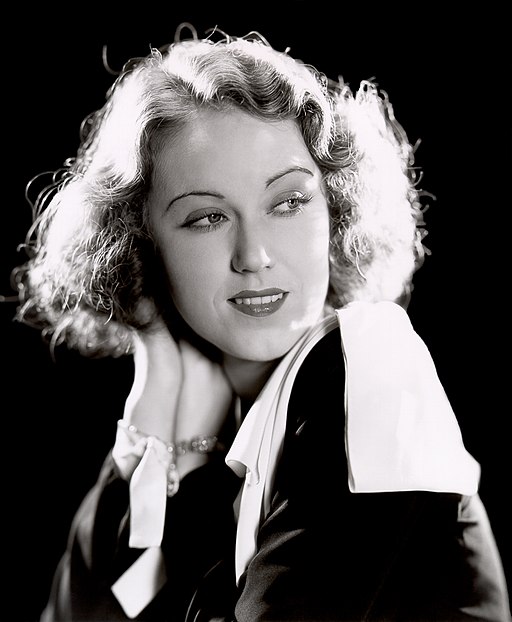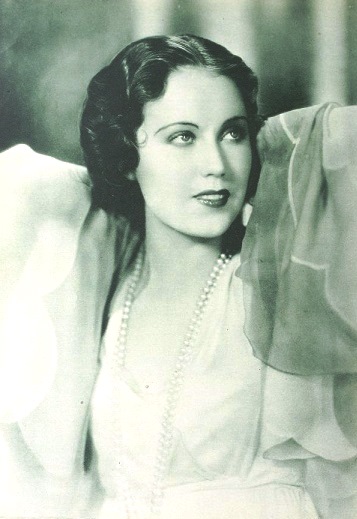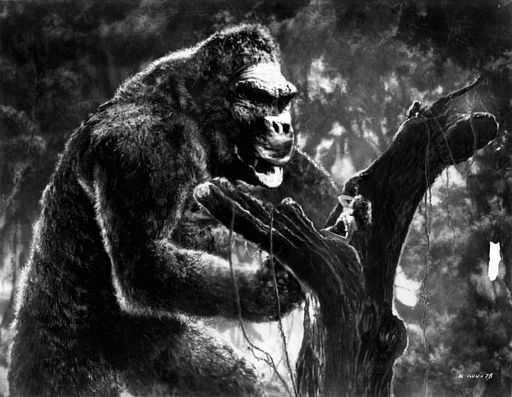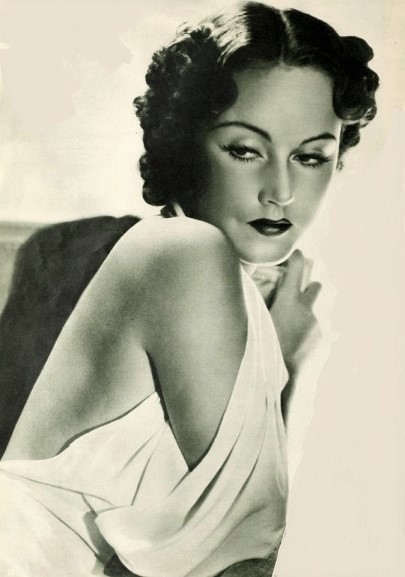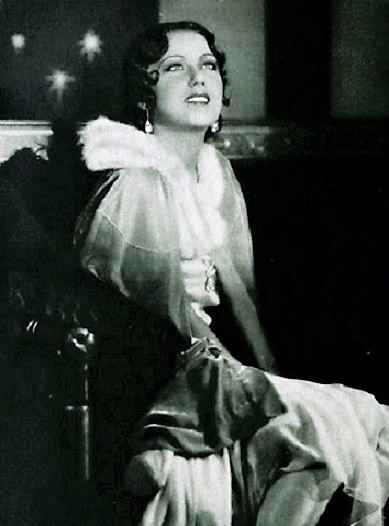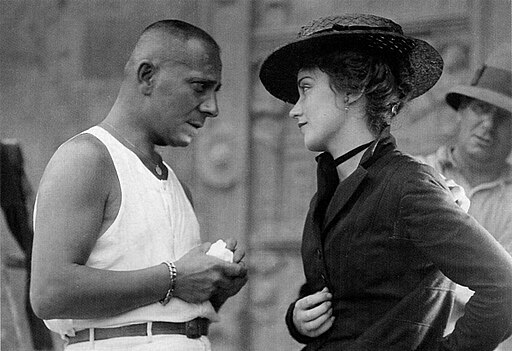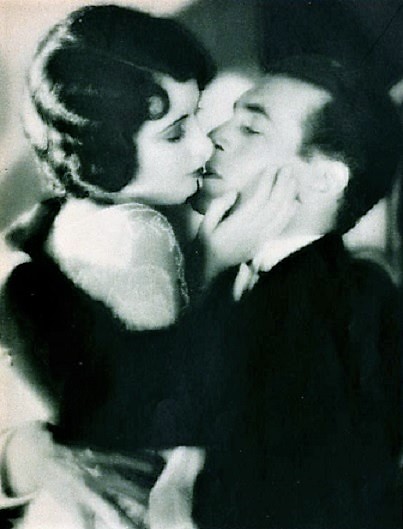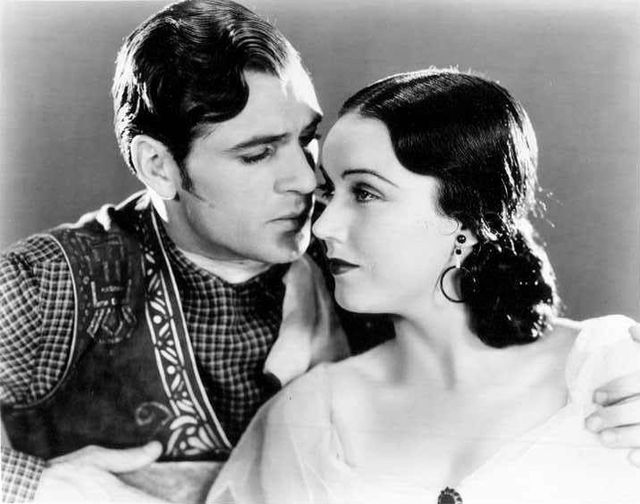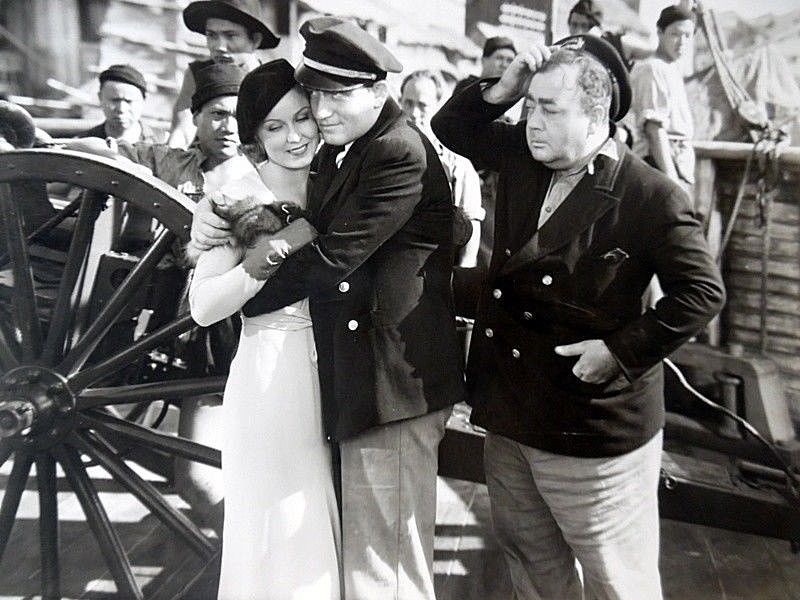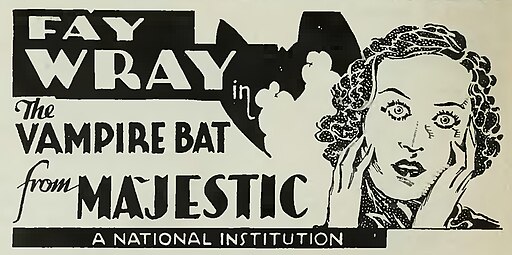Fay Wray
back| Full Name | Vina Fay Wray |
| Stage Name | Fay Wray |
| Born | September 15, 1907 |
| Birthplace | Cardston, Alberta, Canada |
| Died | August 8, 2004 |
| Buried | Hollywood Forever Cemetery, Hollywood, Los Angeles, California, U.S. |
| Married to | John Monk Saunders (m. 1928–1939) - Robert Riskin (m. 1942–1955, his death) - Sanford Rothenberg (m. 1971–1991, his death) |
| Children | Susan Saunders - Victoria Riskin - Robert Riskin Jr. |
| Notable films | King Kong (1933) - The Most Dangerous Game (1932) - Doctor X (1932) - Mystery of the Wax Museum (1933) - The Wedding March (1928) |
Fay Wray
The Queen of Scream
Fay Wray was born to a Mormon family in Alberta, Canada, and moved to the United States as a child. She started her acting career in Hollywood during the silent film era.
After gaining attention in silent films, she transitioned to talkies. Her scream in "King Kong" became iconic, earning her the title of "The Queen of Scream."
In her later years, Wray continued to make appearances in film and television and was active in the film community. She passed away in 2004 at the age of 96.
Related
Fay Wray
Biography, all her Movies and Analysis of her Career
Early Years and Personal Life
- Birth and Family: Fay Wray was born on September 15, 1907, in Cardston, Alberta, Canada. She was one of six children in a Mormon family.
- Moving to the United States: Her family moved to the United States when she was a child, initially settling in Arizona and later in Salt Lake City, Utah.
- Early Interest in Performing: Wray developed an interest in acting at a young age, participating in school plays and other local performances.
Path Towards Success
- Hollywood Beginnings: Her family moved to Hollywood, where she started her film career in the silent movie era, her first film being "Gasoline Love" in 1923.
- Rise to Fame: Wray gained significant attention in the late 1920s and early 1930s, appearing in a series of successful films. Her versatility in both silent and talking films helped solidify her career.
- Iconic Role in 'King Kong': Her role as Ann Darrow in the 1933 film "King Kong" catapulted her to international fame. Her performance, especially her scream, became legendary.
Marriages and Family Life
- First Marriage: Wray was first married to writer John Monk Saunders in 1928. They had one daughter, Susan Saunders, before their divorce in 1939.
- Second Marriage: In 1942, she married screenwriter Robert Riskin. They had two children, Victoria and Robert Jr., before Riskin's death in 1955.
- Third Marriage: Her third marriage was to neurosurgeon Sanford Rothenberg in 1971, lasting until his death in 1991.
Passions and Interests
- Writing: In addition to acting, Wray had a passion for writing. She authored an autobiography, "On the Other Hand," published in 1989.
- Engagement with the Film Community: Even after retiring from acting, Wray remained active in the film community, often attending film festivals and events.
Death and Legacy
- Passing Away: Fay Wray passed away in her sleep at her Manhattan apartment on August 8, 2004, at the age of 96.
- Cause of Death: Her death was attributed to natural causes, specifically related to her age.
- Legacy: Wray left behind a rich legacy as one of Hollywood's earliest stars, remembered particularly for her role in "King Kong." Her contribution to the horror genre and her ability to transition from silent films to talkies marked her as a significant figure in cinema history.
Interview with Fay Wray
Notable Movies featuring Fay Wray:
1920s
1925 "The Coast Patrol": A silent drama where Wray plays a character named Beth Slocum.
1926 "The Man in the Saddle": A silent Western film.
1927 "The Legion of the Condemned": Wray stars in this silent war drama about World War I pilots.
1928 "The Wedding March": Directed by Erich von Stroheim, Wray plays a poor Viennese girl in love with a prince.
1929 "The Four Feathers": An adventure film set in the British Empire where Wray's character is involved in a love triangle.
1930s
1930 "The Sea God": A South Seas adventure film.
1932 "Doctor X": A horror film where Wray plays the daughter of a scientist investigating murders.
1932 "The Most Dangerous Game": Wray stars in this adventure thriller about a man-hunting game.
1933 "King Kong": Wray's most famous role as Ann Darrow, captured by the giant ape King Kong.
1933 "Mystery of the Wax Museum": A horror film involving a wax museum and mysterious disappearances.
1933 "The Vampire Bat": A horror movie set in a small European village plagued by deaths.
1934 "The Affairs of Cellini": A historical comedy where Wray plays a duchess.
1934 "Black Moon": A horror film involving voodoo and a tropical island.
1935 "The Clairvoyant": Wray stars in this drama about a clairvoyant man and his troubled life.
1936 "Roaming Lady": An adventure film set on a yacht.
1940s and Beyond
1940 "Wildcat Bus": Wray plays a character involved in a bus-line war.
1942 "Not a Ladies' Man": A romantic comedy.
1953 "Small Town Girl": One of her later films, a musical romantic comedy.
1958 "Queen Bee": A drama film starring Joan Crawford, with Wray in a supporting role.
Memorable Quotes from Fay Wray:
From Her Movies
- "King Kong" (1933): Perhaps the most famous line associated with Wray, though not spoken by her character, is the closing line of the film: "It was beauty killed the beast." Her role as Ann Darrow, the object of King Kong's affection, is central to this iconic moment.
Personal Reflections and Observations
- On 'King Kong': "I used to resent 'King Kong.' But now, I don't fight it anymore. I realize it's a symbol of the beauty and the beast in all of us."
- Reflecting on Her Career: "I was known as the queen of the Bs. If only I'd been a little more selective."
- On Acting in Horror Films: "Horror does not frighten me. It's like a picture on the wall. I was never afraid of King Kong."
Miscellaneous Quotes
- On Fame and Legacy: "Sometimes I feel that life is passing me by, not slowly either, but with ropes of steam and spark-spangled wheels."
- In Her Autobiography: In her book "On the Other Hand," Wray penned many reflections on her life and career, offering insights into her experiences in Hollywood during its early years.
Analysis of her Acting Style:
Fay Wray's acting style, particularly notable during the transition from silent films to talkies, showcased a blend of expressive physicality and evolving vocal work, reflective of the cinematic trends and demands of her era.
Silent Film Era
- Expressive Physicality: In silent films, where dialogue was absent, actors relied heavily on physical expression and emotiveness to convey their characters' feelings and intentions. Wray excelled in this, using her body language and facial expressions effectively.
- Screen Presence: She had a natural screen presence, which made her stand out even without words. Her performances were often marked by a sense of innocence and vulnerability, which was a sought-after quality in leading ladies of that era.
Transition to Talkies
- Adaptation to Sound: Wray's transition to talkies was smooth compared to many silent film stars who struggled with the new medium. She adapted her acting style to include more nuanced vocal expressions, which complemented her already strong physical acting skills.
- Vocal Work: Her voice, with its distinctive timbre, added another layer to her performances in sound films. It was especially effective in horror movies, where her scream in "King Kong" became iconic.
Genre Versatility
- Horror and Suspense Films: Wray is most remembered for her roles in horror and suspense films. In these, she often portrayed the archetypal damsel in distress, but with a depth that transcended the stereotype. Her ability to portray fear and vulnerability was a key aspect of her performances in these genres.
- Dramatic and Romantic Roles: In her non-horror roles, she demonstrated an ability to handle drama and romance with sensitivity and charm. This versatility allowed her to work steadily even as cinematic tastes evolved.
Overall Acting Traits
- Resilience and Adaptability: Wray's career spanned several decades, a testament to her adaptability and resilience in an industry known for its constant changes.
- Subtlety and Realism: As film acting evolved, so did Wray's style. She moved towards more subtle, realistic performances, which was a hallmark of the evolving film industry in the 1930s and beyond.
Legacy
- Influence on Future Generations: Wray's performances, particularly in "King Kong," left a lasting impact on the horror genre. Her acting style influenced how female leads in horror and suspense films were portrayed in later years.
- Iconic Status: Her scream in "King Kong" not only became a defining moment in her career but also in cinematic history, making her an enduring icon in Hollywood.
Trivia:
A] Fay Wray Cheesecake Photos
The term "cheesecake" in the context of classic Hollywood often referred to a style of photography or posing that was playfully suggestive and often featured actresses in swimsuits or other revealing attire. It was a counterpart to "beefcake" photos for male stars. This type of photography was popular in the 1930s through the 1950s, a period overlapping with Fay Wray's career.
Fay Wray herself, known for her iconic role in "King Kong" and numerous other films, was often the subject of such photography. These photos were part of the Hollywood marketing machine, used to promote films and stars. They were particularly common in fan magazines and promotional materials.
B] Fay Wray appearing in early Perry Mason film
Fay Wray had a connection with the world of "Perry Mason," but not in the way you might initially think. She didn't appear in the original "Perry Mason" television series starring Raymond Burr, which aired from 1957 to 1966. However, she did have a role in a film titled "The Case of the Howling Dog" in 1934, which was based on a Perry Mason novel by Erle Stanley Gardner.
In "The Case of the Howling Dog," Fay Wray played the role of Della Street, who is Perry Mason's secretary and confidante in Gardner's series of novels. This film was one of the earliest adaptations of Gardner's work, predating the more famous television series by over two decades.
C] Fay Wray King Kong Dress
Fay Wray's dress from the 1933 film "King Kong" is an iconic piece of cinema history.
Design and Appearance
- Simplicity: The dress is relatively simple, reflecting the fashion of the early 1930s. It's a long, flowing gown that Wray wears during key scenes, including those where she's captured by King Kong.
- Color: In the black-and-white film, the dress appears to be light-colored, likely white or cream. Since the movie is in black and white, the exact original color of the dress is not easily determined from the film itself.
Cultural Impact
- Iconic Status: The dress became iconic primarily because of the film's historical significance and Wray's memorable performance. It symbolizes the classic damsel-in-distress trope that was prevalent in early Hollywood cinema.
- Representation: The dress, along with Wray's performance, represents the classic beauty-and-beast theme, which is central to the film's narrative.
Preservation and Exhibitions
- Preservation: As with many costumes from early Hollywood films, it's unclear if the original dress was preserved. Many studios at the time did not keep costumes after production, and some were reused in other films.
- Exhibitions: Replicas of the dress, or dresses inspired by it, have been displayed in various exhibitions celebrating film history and the legacy of "King Kong."
Wray's Own Views
- Wray's Attachment: Wray herself spoke fondly of her role in "King Kong," though she initially resented being so strongly associated with the film. She eventually embraced the role's significance in her career and film history.
The dress worn by Fay Wray in "King Kong" is less known for its fashion than for its role in one of the most enduring scenes in cinema history. As such, it stands as a symbol of the film's lasting legacy in popular culture.
Awards and Nominations:
Fay Wray, despite her significant contributions to the film industry and her status as an iconic actress, especially for her role in "King Kong," did not receive a substantial number of awards or nominations during her career. This lack of formal recognition can be attributed to several factors:
- Era of Career: Wray's prime years in the film industry were during the 1920s and 1930s, a time when the modern system of film awards was not yet fully established. The Academy Awards, for instance, only began in 1929 and initially had different criteria and categories compared to today.
- Type of Roles: Wray was best known for her work in horror films and adventures, genres that historically have not been as recognized or celebrated in major awards ceremonies as dramas or comedies.
- Changing Industry Standards: The standards and types of performances celebrated by awards bodies have evolved over the years. What was considered groundbreaking or exceptional acting in Wray's time may not have aligned with the criteria for awards during her active years.
Full list of Movies featuring Fay Wray:
1920s
- 1923: Gasoline Love
- 1925: The Coast Patrol
- 1926: Isn't Life Terrible?; Don't Shoot; What Price Goofy?; Your Own Back Yard; The Man in the Saddle; Lazy Lightning; A One Mama Man
- 1927: The Legion of the Condemned; The Rough Riders; The First Kiss; The Wedding March; Streets of Shanghai; A Reno Divorce
- 1928: The Honeymoon; The Patsy; The Wedding March; The Four Feathers; Pointed Heels
- 1929: Thunderbolt; The Wheel of Life; The Four Feathers
1930s
- 1930: Behind the Make-Up; Paramount on Parade; The Texan; The Sea God; The Border Legion
- 1931: The Conquering Horde; Three Rogues; The Lawyer's Secret; The Finger Points; The Unholy Garden; Dirigible
- 1932: Stowaway; The Impatient Maiden; Doctor X; The Most Dangerous Game
- 1933: King Kong; The Big Brain; Mystery of the Wax Museum; Ann Carver's Profession; Below the Sea; The Vampire Bat; Shanghai Madness; The Bowery; Master of Men; The Woman I Stole
- 1934: Viva Villa!; The Affairs of Cellini; Black Moon; The Countess of Monte Cristo; The Clairvoyant; Cheating Cheaters; Once to Every Woman
- 1935: White Lies; The Richest Girl in the World; Mills of the Gods; Come Out of the Pantry; Woman in the Dark
- 1936: Roaming Lady; They Met in a Taxi; It Happened in Hollywood; When Knights Were Bold
- 1937: Murder in Greenwich Village
- 1938: Smashing the Spy Ring; Navy Secrets; The Jury's Secret
- 1939: Adam Had Four Sons
1940s
- 1940: Wildcat Bus; Sailor's Lady
- 1941: Melody for Three; Not a Ladies' Man
- 1942: The Pride of the Yankees; A Gentleman After Dark; Not a Ladies' Man
- 1949: Treasure of Monte Cristo
1950s
- 1950: Queen Bee
- 1953: Small Town Girl
- 1954: Hell on Frisco Bay; The Cobweb; Rock, Pretty Baby; Crime of Passion; Tammy and the Bachelor
- 1956: Summer Love
- 1958: Dragstrip Riot; Thunder in the Sun
1960s
- 1960: The Big Fisherman
- 1969: Gideon of Scotland Yard

